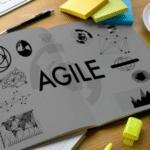
Related Articles

IT Outsourcing
RSK BSL Tech Team
May 4, 2025
|
|

Mobile Application Development
RSK BSL Tech Team
April 30, 2025
|
|

Software Development
RSK BSL Tech Team
April 27, 2025
|
|

Hire resources
RSK BSL Tech Team
April 24, 2025
|
|

Software Development
Praveen Joshi
April 20, 2025
|
|

Artificial Intelligence
Praveen Joshi
April 17, 2025
|
|

Pen Testing
Praveen Joshi
April 15, 2025
|
|

AI Tech Solutions
RSK BSL Tech Team
April 14, 2025
|
|

Software Development
RSK BSL Tech Team
April 9, 2025
|
|

Pen Testing
RSK BSL Tech Team
April 7, 2025
|
|

Software Development
RSK BSL Tech Team
April 3, 2025
|
|

Cloud Application
RSK BSL Tech Team
March 31, 2025
|
|

Pen Testing
Praveen Joshi
March 27, 2025
|
|

Software Development
RSK BSL Tech Team
March 25, 2025
|
|

Software Development
RSK BSL Tech Team
March 20, 2025
|
|

Software Development
RSK BSL Tech Team
March 18, 2025
|
The Future of Agile : Emerging Trends and Best Practices
As Agile methodologies continue to evolve, offshore development teams are increasingly embracing new trends to enhance their workflows. The future of Agile promises innovations that improve efficiency, flexibility, and collaboration. This blog explores the emerging trends and best practices in Agile, including remote work adaptations, design thinking integration, AI advancements, and the rise of scaled frameworks.
Best Practices in Agile
Iterations:
The project is like a long journey, but instead of trying to map out the entire route at the beginning, Agile breaks it into smaller, manageable sections. Each iteration focuses on features or functionalities that deliver value to the end user.
Cross-functional teams:
Unlike traditional siloed teams, Agile management teams consist of members with all the skills necessary to complete a task within the team itself. Developers, designers, testers, and even stakeholders in the product may fall under this category. Everyone collaborates closely together.
Continuous feedback:
After each iteration, there is a built-in feedback loop. The team solicits feedback on their recent work from users, stakeholders, and members of their team. This feedback is then used to enhance the product in the next iteration.
Flexibility:
Change is inevitable in projects. Agile is intended to be adaptable to changing circumstances. New requirements or changes to existing ones can be implemented throughout the project as needed, as long as they are within the scope of the current iteration.
Agile trends for 2024
1. Remote Work and Virtual Collaboration
Working from home and collaborating virtually has become the new normal in the wake of the pandemic. Agile methodologies have adapted well to this change, and we are seeing increased use of remote collaboration tools such as Slack, Trello, and Jira in Agile environments.
Agile methodologies are being adjusted for remote teams with a focus on transparency and communication to guarantee that there are no issues in the development process and that everyone involved is in on the same page.
2. Design thinking
Design thinking, a human-centred approach to innovation, aligns seamlessly with Agile methodology. It focuses on understanding and meeting user needs, which complements Agile’s iterative and feedback-driven development process. They share a focus on user needs and thrive on flexibility and quick adjustments.
Design thinking is a big Agile trend to watch for in 2024 and beyond, and here is how it could work:
Incorporate user research into the sprint:
The Agile sprint would incorporate the design thinking phases of problem identification and user empathy development. Along with development work, user research activities like interviews with users could be conducted.
Quick experimentation and prototyping:
The group would then make use of the rapid experimentation and prototyping that is emphasized by design thinking. Collect quick user feedback early in the sprint; this may mean creating low-fidelity prototypes and then iterating on them in response to fresh information.
3. AI and machine learning integration
AI and machine intelligence (ML) are fast transforming project management, and Agile is taking notice. Incorporating AI and machine learning into Agile offers numerous advantages, including higher efficiency, improved quality, better decision-making, and continual development.
The following AI-powered technologies for Agile workflows are probably going to be the main drivers:
AI-powered insights:
AI can evaluate project data and user feedback to create insights for improving development and user experience.
Automated tasks:
Artificial intelligence (AI) may automate repetitive operations such as data entry, progress reporting, and test case execution, freeing up team members to concentrate on more high-level strategic work.
Predictive analytics:
AI can evaluate past data to predict risks, detect bottlenecks, and optimize Agile processes. This enables teams to address issues and proactively streamline workflows.
4. Rise of Scaled Agile (SAFe) and Scrum
Two frameworks stand out when applying Agile concepts to larger Agile organizations and complicated projects: Scaled Agile Framework (SAFe) and Scrum.
SAFe
Managing complex projects:
Large organizations must oversee complex projects with several teams and dependencies. Scaled Agile frameworks such as SAFe (Scaled Agile Framework) and LeSS (Large Scale Scrum) offer a solution for handling large-scale projects with complex dependencies.
Alignment and efficiency:
These frameworks provide rules for coordinating work across numerous teams, ensuring that everyone is aligned with the project managers’ overall targets. This encourages improved communication, avoids duplication of effort, and increases overall project efficiency.
Customization:
Adapts to various organizational needs and circumstances.
Scrum
Simplicity and adaptability:
Scrum’s key ideas of short sprints, cross-functional teams, and continuous feedback are still effective for managing projects of various sizes. Its simplicity makes it simple to learn and apply, especially for teams new to Agile.
Flexibility:
Scrum is adaptable to a variety of project types and team structures. While scaled Agile frameworks provide the structure for large-scale adoption, Scrum continues to serve as the foundation for individual project teams inside those structures.
Team empowerment:
Fosters ownership and accountability within teams.
5. Cloud agility and cloud-based solutions
Cloud computing is perfectly aligned with Agile concepts, providing benefits like as speed, flexibility, and collaboration.
-
Faster Development Cycles:
Cloud resources may be deployed and scaled quickly, allowing for speedier product development and deployment.
-
Enhanced Collaboration:
Cloud-based solutions enable seamless collaboration across geographically distributed teams, removing barriers to effective communication and cooperation.
Cloud-based solutions for Agile teams
- Agile project management tools offer features like task tracking, communication tools, and visual dashboards, streamlining Agile workflows.
- Cloud-based CI/CD systems automate the development, test, and deployment processes, making software upgrades faster and more reliable.
- DevOps automation helps teams integrate development, operations, and security teams, leading to improved collaboration and faster deployments.
Conclusion
Agile is a methodology that numerous software development company uses throughout the world for over two decades. The agile methodology is a fun way to create a better software product. New trends in agile methodology continue to emerge, improving the development process. With such developments, the future of software development appears to be more exciting and accessible.
Praveen Joshi
Praveen is a seasoned IT Solutions Leader and Director at RSK Business Solutions, a technology-driven IT Consulting Company that specializes in Bespoke Software Development, Agile Consulting, Mobile App Development, Smart Sourcing, and much more. For the last 17 years, he has been delivering quality custom IT solutions that help businesses achieve their goals.

 Share
Share Post
Post Tweet
Tweet Copy
Copy


